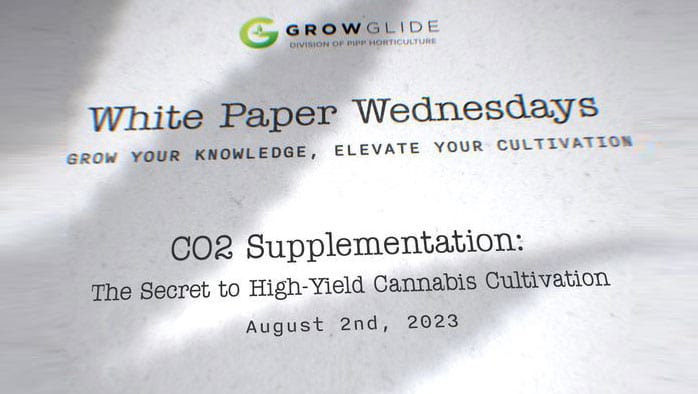
Ever wonder if there was a secret to boosting the success of your commercial grow operation? You may be overlooking a tiny molecule that holds immense potential: carbon dioxide (CO2).
In the world of cannabis cultivation, understanding the importance of CO2 and how it interacts with your plants is like having a secret weapon. This crucial element plays a vital role in how plants grow, develop, and ultimately contribute to the yield you’re working so hard to maximize.
In this week’s White Paper Wednesday, we dive into two articles, “Photosynthesis and Cannabis” and “CO2 Assimilation in C3-C4 Intermediate Plants,” and look at how cannabis plants utilize CO2 to power their growth and development.
How Do Plants Use CO2?
Plants use carbon dioxide (CO2) during a process called photosynthesis to produce energy in the form of carbohydrates. Here’s a simplified explanation of how it works:
Photosynthesis: Plants have specialized structures called chloroplasts, which contain chlorophyll pigment. Chlorophyll absorbs sunlight, providing the energy needed for photosynthesis. During photosynthesis, plants convert CO2 and water into glucose (a simple sugar) and oxygen. The overall reaction can be represented as follows: 6 CO2 + 6 H2O + sunlight → C6H12O6 (glucose) + 6 O2
Stomata: Plants take in carbon dioxide from the atmosphere through tiny openings on their leaves called stomata. Stomata are surrounded by guard cells that control their opening and closing to regulate gas exchange. When stomata are open, CO2 enters the plant.
Carbon fixation: Inside the plant cells, CO2 combines with a molecule called ribulose bisphosphate (RuBP) in a process called carbon fixation. This reaction is catalyzed by an enzyme called RuBisCO. The resulting molecule is unstable and quickly breaks down into two molecules of 3-phosphoglycerate (3-PGA).
Reduction: The energy from sunlight, captured by chlorophyll, is used to convert the 3-PGA molecules into a different molecule called glyceraldehyde-3-phosphate (G3P). This step requires ATP (adenosine triphosphate) and NADPH (nicotinamide adenine dinucleotide phosphate) generated during the light-dependent reactions of photosynthesis.
Regeneration: Some of the G3P molecules produced are used to regenerate RuBP, allowing the carbon fixation process to continue. This step consumes additional ATP.
Carbohydrate production: The remaining G3P molecules are used to synthesize various carbohydrates, such as glucose and fructose. These carbohydrates serve as energy sources for the plant and can be used for growth and maintenance or stored as starch for future use.
In summary, plants use carbon dioxide from the atmosphere, along with water and sunlight, to carry out photosynthesis. During this process, they convert CO2 into carbohydrates, which provide energy for plant growth and maintenance. Additionally, the oxygen released as a byproduct of photosynthesis is released back into the atmosphere, contributing to the oxygen content in our air.
(McKeil, 2018)
Plants primarily take in carbon dioxide (CO2) through their stomata. However, some exceptional cases exist where plants can use alternative pathways to acquire CO2.
CAM Plants: Certain plants, like cacti and other succulents, have a specialized type of photosynthesis called Crassulacean Acid Metabolism (CAM). These plants open their stomata at night, when it is cooler and less humid, to minimize water loss. They take in CO2 and convert it into an organic acid, storing it in vacuoles within their cells. During the day, when the stomata are closed, the stored CO2 is released and used for photosynthesis.
C4 Plants: Another group of plants, known as C4 plants, have an anatomical and biochemical adaptation that allows them to efficiently use CO2 even when atmospheric concentrations are low. C4 plants, such as maize, sugarcane, and certain grasses, have specialized leaf anatomy that separates the initial CO2 fixation step from the rest of the photosynthetic process. They first fix CO2 into a four-carbon compound in specialized cells called bundle sheath cells. These cells have fewer stomata and a different type of photosynthetic enzyme, allowing them to concentrate CO2 and minimize water loss.
C3 Plants: THIS IS CANNABIS. C3 plants are a type of plant that uses the C3 carbon fixation pathway during photosynthesis. This pathway is so named because the first carbon compound produced during photosynthesis contains three carbon atoms. The majority of plants on Earth, about 85-90% of them, are C3 plants.
Here’s how the C3 carbon fixation pathway works:
Carbon Fixation: In the first step, carbon dioxide (CO2) from the atmosphere is captured and combined with a five-carbon sugar called ribulose-1,5-bisphosphate (RuBP). This reaction is catalyzed by the enzyme ribulose-1,5-bisphosphate carboxylase/oxygenase, commonly known as Rubisco.
Formation of 3-Phosphoglycerate (PGA): The combination of CO2 and RuBP forms an unstable six-carbon compound that quickly breaks down into two molecules of 3-phosphoglycerate (PGA), each containing three carbon atoms.
Reduction of PGA: ATP (adenosine triphosphate) and NADPH (nicotinamide adenine dinucleotide phosphate) generated during the light-dependent reactions of photosynthesis are used to convert PGA into a three-carbon sugar called glyceraldehyde-3-phosphate (G3P).
Formation of Glucose: Some of the G3P is used to produce glucose and other sugars, which can be utilized for energy storage and growth.
(ScienceFacts, n.d.)
One major drawback is that Rubisco, the enzyme responsible for capturing carbon dioxide, can also bind to oxygen, leading to a process called photorespiration. Photorespiration can be energetically wasteful and reduces the efficiency of carbon fixation in C3 plants, particularly in hot and dry conditions.
Like most plants, cannabis plants primarily assimilate carbon dioxide (CO2) through their stomata, which are small openings on the surface of their leaves. However, cannabis plants can also uptake CO2 through other structures, although to a lesser extent. Here are some additional ways cannabis can assimilate CO2:
Stems: While the primary site for CO2 absorption is the stomata on leaves, cannabis stems also have limited gas exchange capabilities. The outer layer of the stem, known as the periderm, contains small pores called lenticels that allow for gas exchange, including the uptake of CO2. However, the amount of CO2 assimilated through stems is relatively minor compared to the stomata on leaves.
Roots: Although roots primarily absorb water and nutrients from the soil, they can also perform some gas exchange. Root hairs, extensions of root cells, can take in small amounts of oxygen and release CO2. However, this contribution to CO2 assimilation is generally insignificant compared to the uptake through stomata.
It’s worth noting that while some CO2 uptake can occur through stems and roots, most carbon dioxide assimilation in cannabis and other plants still occurs through the stomata on the leaves. The stomata provide the most efficient and direct route for gas exchange, including the uptake of CO2 and the release of oxygen produced during photosynthesis.
CO2 Foliar Applications: Maximizing Growth and Pest Control
Carbon dioxide (CO2) sprays are emerging in controlled indoor environments with data-backed success. We know that managing CO2 will keep our plants healthy and producing the most, but foliar CO2 applications have also been incorporated into IPM as fungicides and pesticides.
Supplemental CO2 is commonly used in indoor cultivation facilities looking to optimize growth at every stage, from faster rooting to more consistent veg and through flower but controlling the flow of CO2 in a room can be challenging. Burners and in room tanks have given way to outdoor tanks directly plumbed into the room or ducting. While this is a good approach, it is important to supplement your racking with airflow to ensure that the appropriate CO2 concentrations are available for every leaf at every moment of photosynthesis.
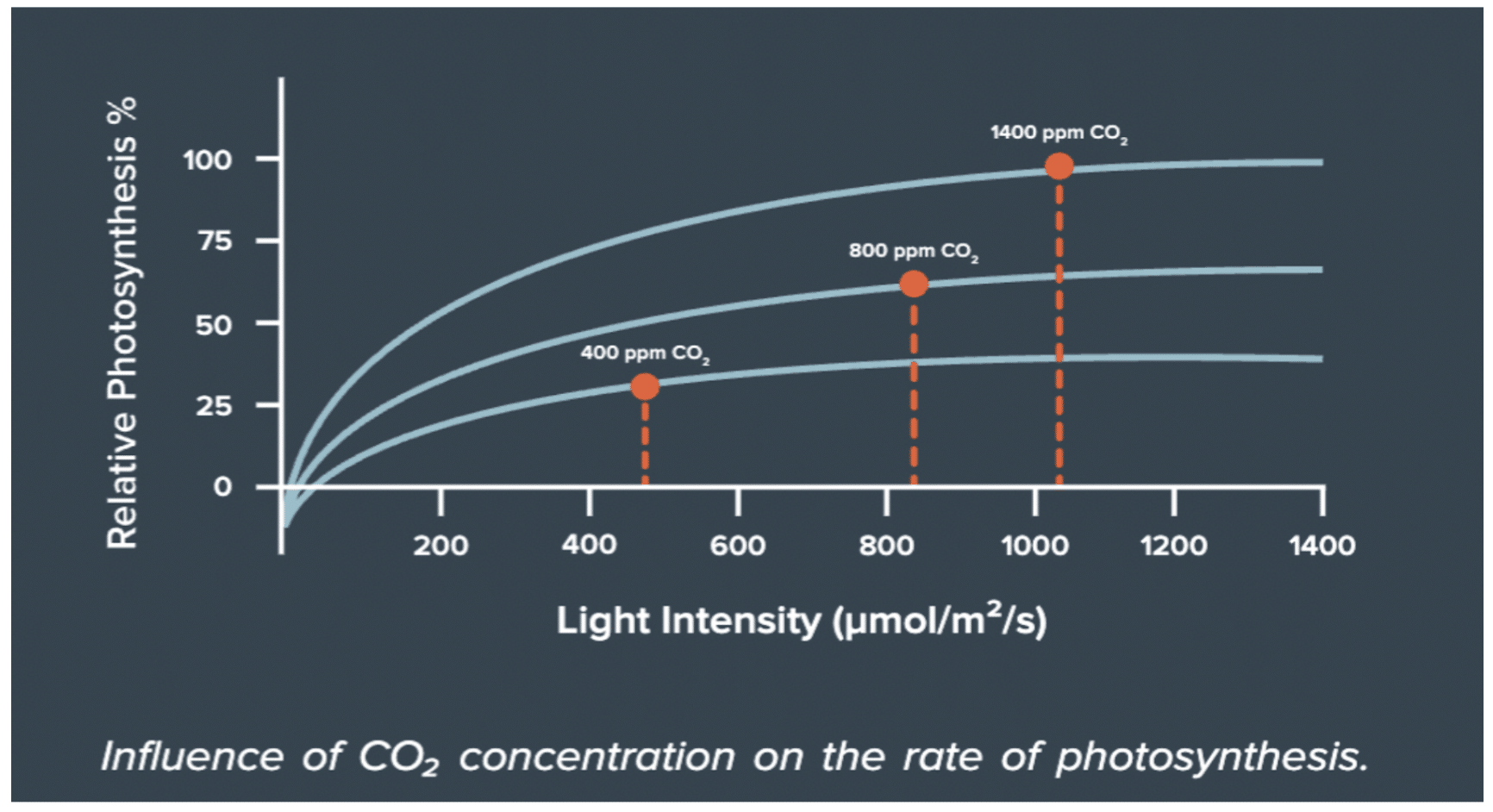
(Fluence, n.d.)
Supplemental carbon dioxide (CO2) can offer several benefits when used in cannabis cultivation, particularly in indoor environments where controlling CO2 levels is crucial. Here are some of the benefits of CO2 supplementation for cannabis cultivation:
Enhanced photosynthesis: CO2 is a vital component in photosynthesis, the process by which plants convert light energy into chemical energy. Increasing CO2 levels can stimulate and improve the rate of photosynthesis, leading to increased plant growth, larger yields, and faster development of flowers or buds.
Improved plant growth and yields: Elevated CO2 levels can promote vigorous plant growth by increasing the efficiency of photosynthesis. This results in larger and more productive plants, with potentially higher yields and better overall crop quality.
Increased biomass production: Higher CO2 concentrations can contribute to increased biomass production, including larger leaves, thicker stems, and more extensive root systems. This can lead to stronger and more resilient plants that are better equipped to withstand environmental stressors.
Faster growth cycles: With optimal CO2 levels, cannabis plants can exhibit accelerated growth rates and shortened vegetative and flowering periods. This allows for more frequent harvests and improved cultivation efficiency.
Efficient use of resources: CO2 supplementation can improve the plant’s water and nutrient use efficiency. When CO2 levels are elevated, plants can reduce the amount of water loss through transpiration, resulting in better water utilization. This efficiency also extends to nutrient uptake and utilization, potentially reducing nutrient requirements.
Better environmental control: In indoor grow environments, by managing CO2 levels alongside temperature, humidity, and lighting, growers can create an optimized environment that maximizes plant growth and yield potential.
It’s important to note that while CO2 supplementation can be beneficial, it is most effective in well-controlled indoor environments where other factors like lighting, temperature, and nutrient availability are optimized. Monitoring and controlling CO2 levels within the appropriate range (usually between 1000-1500 parts per million or ppm) is crucial to avoid potential negative effects and ensure the safety of both plants and personnel.
Optimizing CO2 Assimilation With Bottom-Up Airflow
Bottom-up airflow is essential in cannabis cultivation for facilitating efficient CO2 assimilation at the stomatal level, which is on the underside of the leaf.
Enhanced CO2 distribution: Bottom-up airflow helps to distribute CO2 evenly throughout the plant canopy. Introducing CO2 from the bottom of the canopy ensures that the gas rises and surrounds the lower leaves, where the majority of stomata (small openings on leaf surfaces) are located. This allows for better access to CO2 by the plants, maximizing their potential for CO2 assimilation through photosynthesis.
Improved gas exchange: Effective bottom-up airflow promotes proper gas exchange within the plant canopy. It helps to remove the stale air that may have accumulated around the leaves and replace it with fresh CO2-rich air. This ensures a continuous supply of fresh CO2 to the leaves and facilitates the removal of oxygen produced during photosynthesis, preventing it from inhibiting further CO2 uptake.
Minimized CO2 stratification: Bottom-up airflow helps to minimize CO2 stratification, which refers to the uneven distribution of CO2 within the growing space. Without adequate airflow, CO2 can accumulate at higher levels in the upper portion of the canopy, leading to suboptimal CO2 availability for the lower leaves. Bottom-up airflow helps to disperse CO2 more evenly throughout the canopy, ensuring consistent CO2 exposure for all the leaves.
Increased photosynthetic efficiency: The combination of even CO2 distribution and efficient gas exchange facilitated by bottom-up airflow results in increased photosynthetic efficiency. With optimal CO2 levels and proper airflow, cannabis plants can maximize their photosynthetic capacity, leading to improved growth, biomass production, and potentially higher yields.
To achieve proper bottom-up airflow in cannabis cultivation, it’s essential to design and implement an appropriate ventilation system that ensures consistent and controlled airflow throughout the plant canopy. This may involve using fans, airflow systems, and intake vents strategically positioned to facilitate upward airflow.
What airflow velocities are needed at the stomatal level to optimize CO2 assimilation?
Optimizing airflow velocities at the stomatal level to enhance CO2 assimilation in cannabis involves maintaining a gentle and consistent airflow. However, specific airflow velocity requirements at the stomatal level can vary depending on various factors, including plant species, growth stage, environmental conditions, and other environmental factors such as temperature and humidity. Here are some general considerations:
Avoid excessive airflow: High airflow velocities can disrupt the boundary layer surrounding the leaves, potentially leading to increased transpiration and loss of water. This may result in suboptimal CO2 assimilation. Therefore, it is important to avoid excessive airflow that may cause turbulent conditions and excessive movement of leaves. Monitor and control your airflow to achieve consistent full-air exchanges in your cultivation spaces.
Ensure gentle movement: A gentle, uniform airflow is generally preferred to optimize CO2 assimilation. The aim is to create a slight, consistent movement of leaves without causing excessive leaf fluttering or stress. This helps in facilitating efficient gas exchange while minimizing water loss through transpiration.
Consider leaf and canopy density: The density of leaves and the overall canopy structure can influence the required airflow velocities. Denser canopies may require slightly higher airflow velocities to penetrate and reach the stomatal level effectively which is why SOPs and defoliation practices make such a big impact on plant health.
Most research points to 0.4-0.7m/s airflow velocity at the stomatal level will break the boundary layer and optimize gas exchange in the cannabis plant but that is dependent on temperature, humidity, light intensity and cultivar.
Factors Influencing Optimal CO2 Concentrations for Cannabis Plant Vitality
Growth stage: The CO2 requirements of cannabis plants vary throughout their growth stages. During the vegetative stage, plants typically benefit from higher CO2 concentrations, ranging from 800 to 1200 parts per million (ppm). During the flowering stage, slightly higher CO2 levels (around 1000 to 1500 ppm) can support increased flower development and yield.
Environmental conditions: The temperature and humidity levels in the growing environment influence CO2 requirements. Higher temperatures generally result in increased CO2 uptake by the plants. However, high humidity levels can limit CO2 absorption through the stomata. Therefore, it is important to maintain a balance between temperature, humidity, and CO2 concentrations to optimize plant vitality.
Light intensity: Higher light intensities generally increase the demand for CO2. Cannabis plants exposed to intense light can utilize higher CO2 concentrations more effectively for photosynthesis. Adjusting CO2 levels accordingly can help match the increased metabolic demands during periods of high light intensity.
Nutrient availability: The availability of essential nutrients, particularly nitrogen, influences the plants’ ability to utilize and benefit from elevated CO2 levels. Proper nutrient balance, including nitrogen, is important for maximizing the effects of increased CO2 concentrations on plant growth and vitality.
Cultivation method: The cultivation method used can impact CO2 requirements. In indoor environments, where CO2 levels can be precisely controlled, higher concentrations of CO2 (around 1000 to 1500 ppm) are often utilized to enhance growth and yield. In outdoor or greenhouse settings, CO2 concentrations are generally dependent on ambient levels and may not require active supplementation.
It’s important to note that excessively high CO2 concentrations can have adverse effects on plant health and may pose risks to human safety. It is crucial to monitor CO2 levels carefully and maintain them within recommended ranges. Consult with experienced growers, follow best practices, and consider the specific characteristics of your cultivation setup to determine the optimal CO2 concentrations for maximizing cannabis plant vitality.
How Much CO2 Can Cannabis Use?
The amount of carbon dioxide (CO2) that cannabis can assimilate per hour varies depending on several factors, including plant size, growth stage, environmental conditions, light intensity, and CO2 concentration. It is challenging to provide an exact numerical value as it can vary significantly.
Stomatal limitations: The rate of CO2 assimilation is primarily limited by the capacity of the plant’s stomata to take in CO2. Stomata are small openings on the leaf surface through which gas exchange occurs. The number and activity of stomata vary among plant species and environmental conditions.
Light dependency: CO2 assimilation is closely linked to the rate of photosynthesis, which is highly dependent on light availability. In the presence of sufficient light, cannabis plants can enhance their capacity for CO2 assimilation. Higher light intensity generally leads to increased CO2 uptake and assimilation rates.
Growth stage and plant size: The rate of CO2 assimilation varies during different growth stages of cannabis plants. Typically, younger plants in the vegetative stage have a higher CO2 assimilation rate compared to mature flowering plants. Additionally, larger plants with more leaves have a greater surface area for gas exchange and can potentially assimilate more CO2.
CO2 concentration: The concentration of CO2 in the growing environment plays a significant role in determining the rate of CO2 assimilation. Higher CO2 concentrations within the optimal range (usually 1000-1500 parts per million or ppm) can enhance the rate of photosynthesis and CO2 assimilation.
It’s important to note that CO2 assimilation rates are not necessarily linear or constant over time. They can be influenced by various factors, as mentioned above. The specific assimilation rate per hour will depend on the combination of these factors and the specific conditions of your cannabis cultivation setup.
For precise measurements of CO2 assimilation rates, sophisticated equipment like gas analyzers or photosynthesis measurement systems are typically used in scientific research settings. These tools can provide accurate and real-time data on CO2 assimilation rates for specific plant species and growth conditions.
Can We Have Too Much CO2?
Yes, cannabis plants can indeed have too much carbon dioxide (CO2). While CO2 is essential for photosynthesis and plant growth, excessively high levels of CO2 can be detrimental to cannabis plants and have adverse effects on their health and development. Here are some reasons why too much CO2 can be problematic:
Toxic effects: Extremely high CO2 concentrations, typically above 1500-2000 parts per million (ppm), can be toxic to plants. Elevated CO2 levels can disrupt the normal functioning of stomata and lead to reduced transpiration, limiting the plant’s ability to regulate water uptake and nutrient absorption. This can negatively impact growth and overall plant health.
Imbalanced photosynthesis: While increased CO2 can initially enhance photosynthesis and plant growth, excessively high concentrations can disrupt the balance of photosynthetic processes. The plant’s capacity to utilize light energy and convert CO2 into carbohydrates can be compromised, leading to decreased efficiency and diminished yield potential.
Reduced nutrient uptake: Excessive CO2 can affect nutrient uptake and availability. High CO2 levels may disrupt the uptake of essential nutrients, including macronutrients and micronutrients, leading to nutrient imbalances and deficiencies. This can negatively impact plant growth, development, and overall vitality.
Plant stress and susceptibility: Very high CO2 levels can induce stress responses in cannabis plants, making them more susceptible to certain pests, diseases, and environmental stresses. It can create a more favorable environment for fungal diseases and negatively affect the plant’s natural defense mechanisms.
Safety concerns: Extremely high concentrations of CO2 can pose safety risks to humans and animals within the growing environment. Concentrations above 5000 ppm can lead to health hazards, including respiratory issues and oxygen deprivation.
Careful monitoring, proper ventilation, and adherence to safety guidelines are essential when implementing CO2 supplementation in indoor growing environments.
Using CO2 for Pest and Pathogen Control
Carbon dioxide (CO2) can be used as a method to control pests and pathogens in certain situations. High concentrations of CO2 can be employed as a fumigant or an asphyxiant to kill or suppress various organisms, including pests and pathogens. The effectiveness of CO2 as a pest control method depends on factors such as concentration, exposure time, and the susceptibility of the target organisms.
Here are a few examples of how CO2 can be used in pest and pathogen control:
Controlled Atmosphere Treatment: In certain storage facilities, such as grain storage silos or food processing warehouses, elevated levels of CO2 can be used to create a controlled atmosphere that helps control pests. High concentrations of CO2 are introduced to displace oxygen, creating an environment that is lethal to pests such as insects or mites while being safe for the stored products.
Modified Atmosphere Packaging: In the food industry, modified atmosphere packaging (MAP) is used to extend the shelf life of perishable products. This technique involves replacing the normal atmospheric air inside the packaging with a modified composition. In some cases, elevated CO2 levels are used to inhibit the growth of spoilage microorganisms, including certain pathogens.
Cultivation Pest Control: In greenhouse settings, CO2 can be employed as a tool for pest control. The application of high concentrations of CO2 can be used to suffocate or suppress certain pests, such as aphids or mites, without the need for chemical pesticides. However, it is important to carefully manage CO2 levels to avoid negative effects on beneficial insects or plant health.
It’s worth noting that the effectiveness and safety of using CO2 for pest and pathogen control depend on the specific context, the target organisms, and the concentration and duration of exposure. Therefore, it is essential to follow appropriate guidelines, regulations, and best practices when using CO2 for pest or pathogen management.
The Crucial Role of CO2 Management
CO2 management is a major factor in a cultivation facility. It can drive plant health, increase flower yields, shorten flower times, and can support an IPM/IMM plan. But the most important factor is control of CO2 as you want to limit waste, get the right gas to the right place with the right surrounding conditions to grow better plants, and measure your success. In short, Science + Engineerings = Cultivation Efficiency
In the fast-paced, ever-evolving world of commercial cannabis cultivation, staying a step ahead is crucial. A thorough understanding of CO2’s role in your plants’ life cycle could be the difference between a standard harvest and an exceptional one.
Cannabist, M., & Cannabist, M. (2017). Photosynthesis and Cannabis | TheModern Farm. TheModern Farm – Science Driven Organics W/ ModernCannabist. https://themodern.farm/photosynthesis-and-cannabis/
Dhali, D. (2021, November 13). Carbon fixation in Photosynthesis: Definition and Process. Science Facts. https://www.sciencefacts.net/carbon-fixation.html
How to use CO2 for Optimal Cannabis Cultivation. (2023). Fluence. https://fluence.science/co2-for-cannabis-cultivation/
McKeil, J. (2023, July 20). Mastering VPD control for plentiful harvests – Cannabis Tech. Just another WordPress site. https://www.cannabistech.com/articles/mastering-vpd-control-for-plentiful-harvests/
Monson, R. K., & Rawsthorne, S. (2000). CO2 assimilation in C3-C4 intermediate plants. In Advances in photosynthesis and respiration (pp. 533–550). https://doi.org/10.1007/0-306-48137-5_22







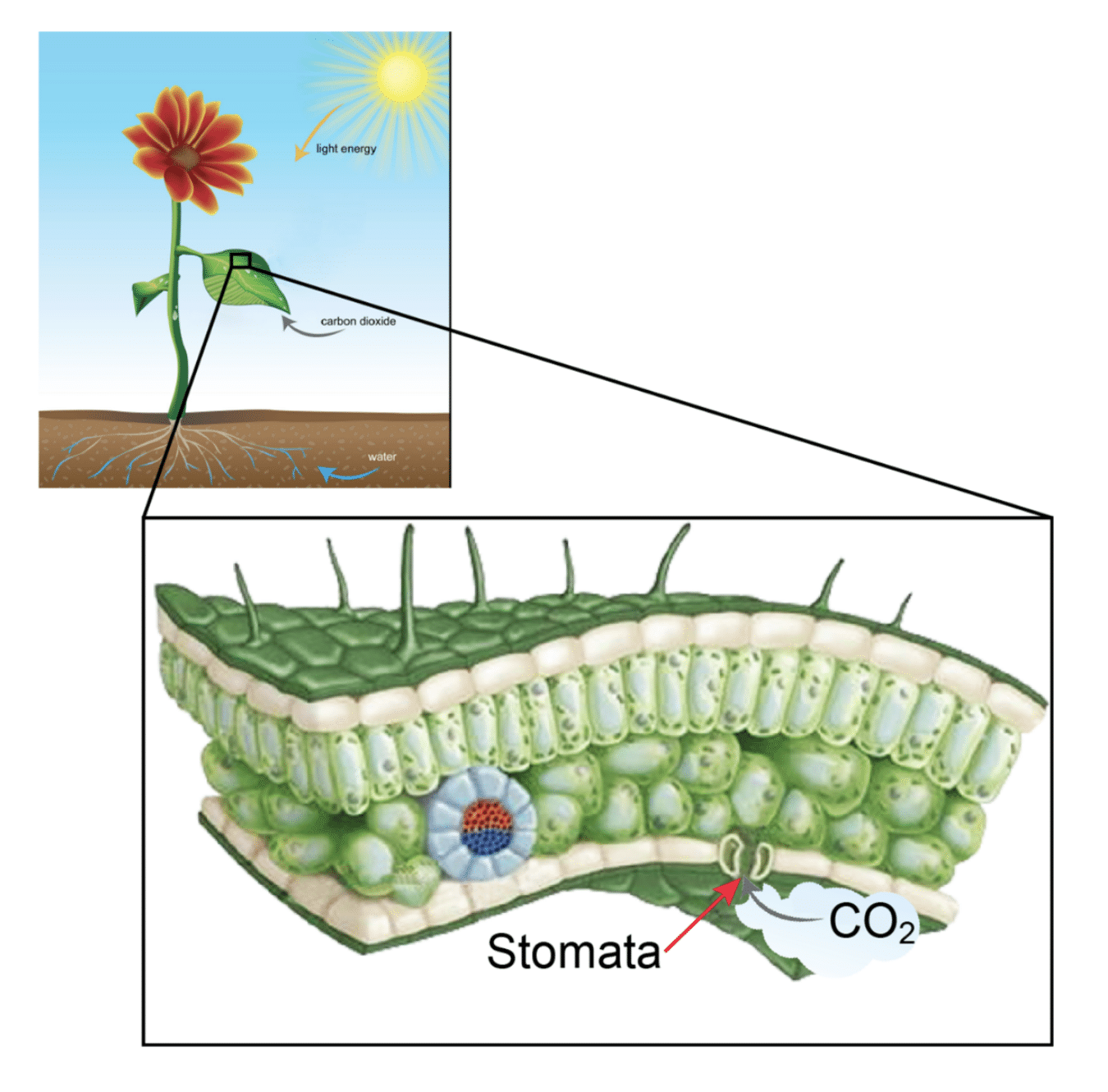
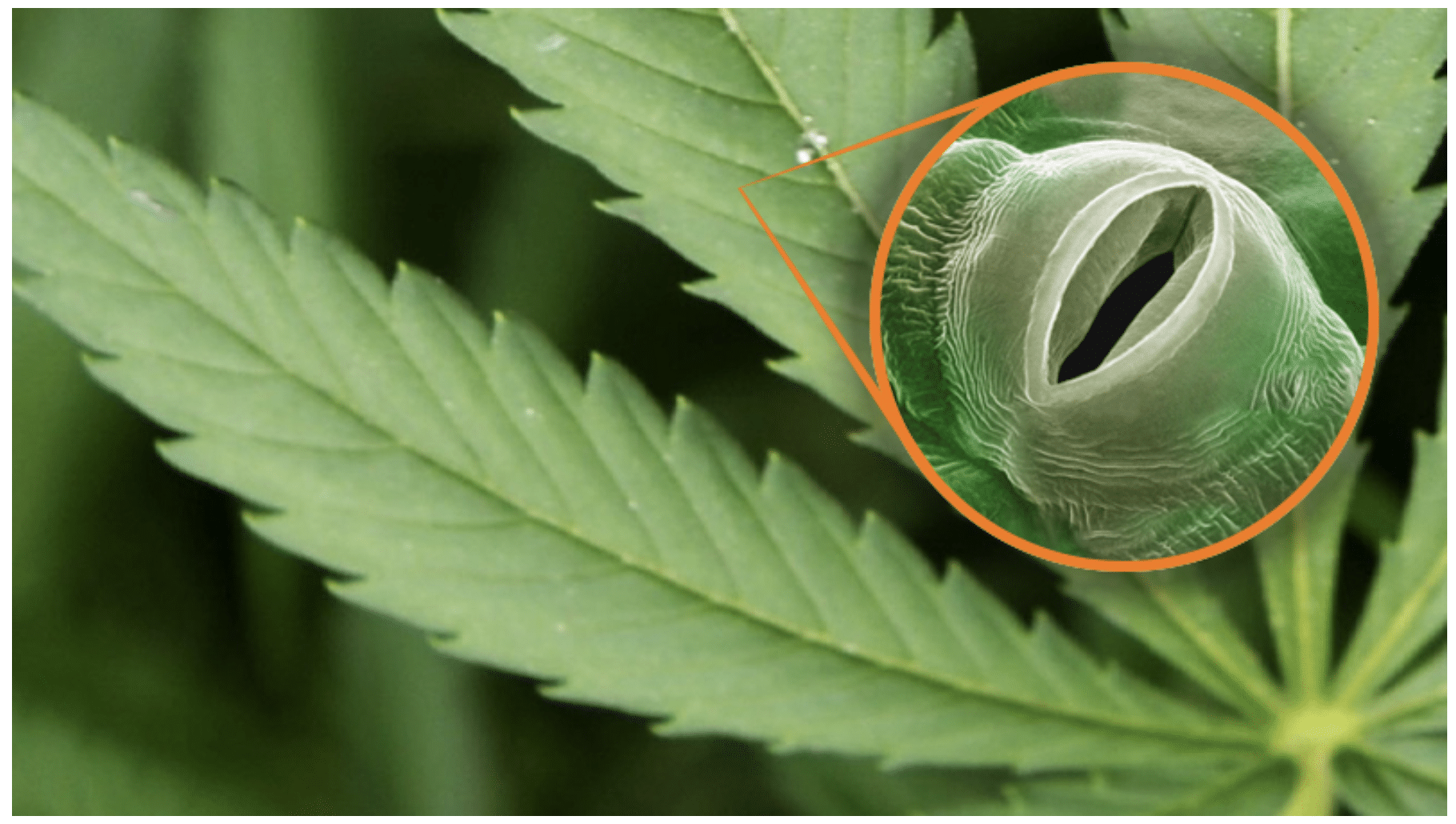
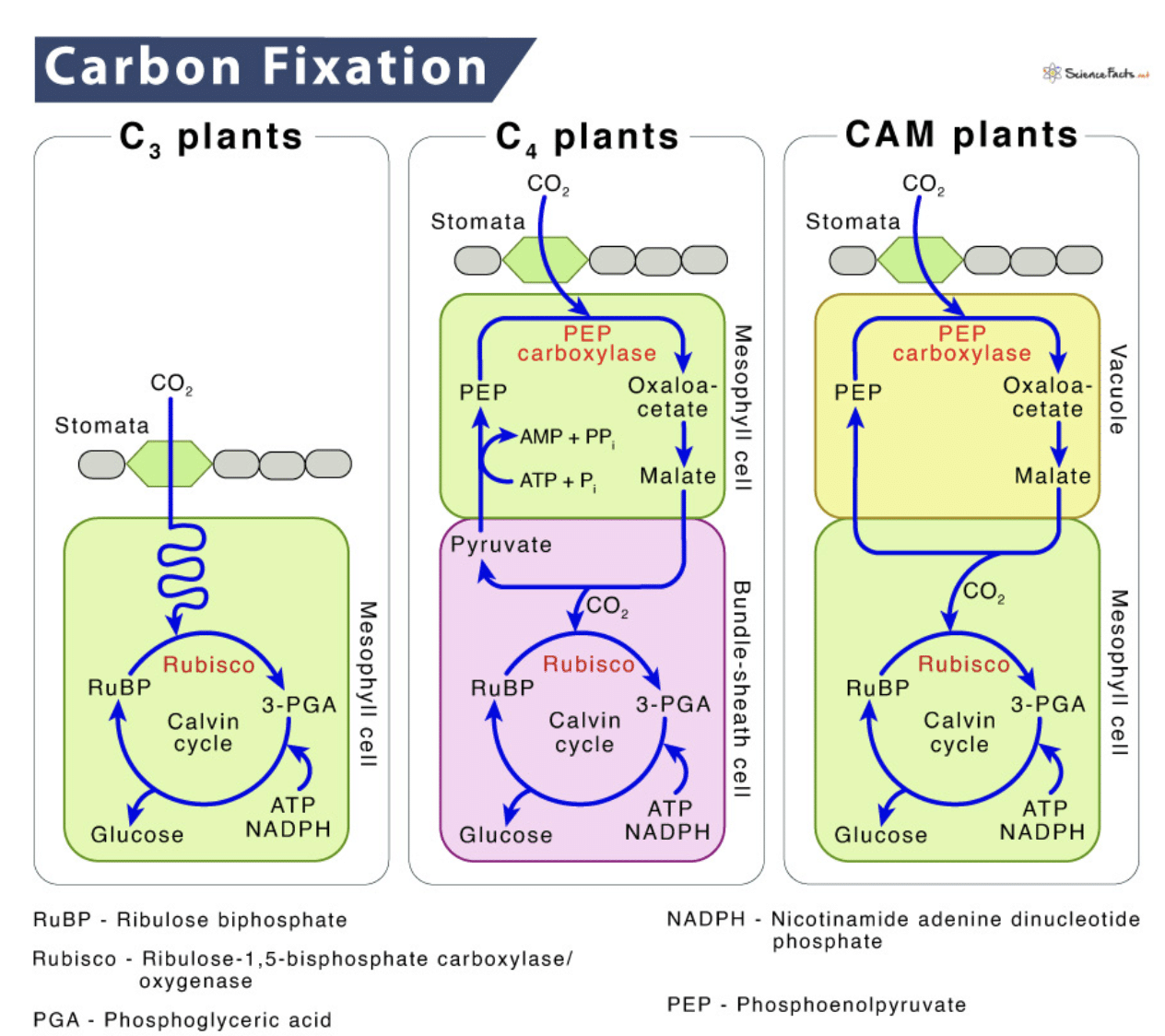






Leave A Comment